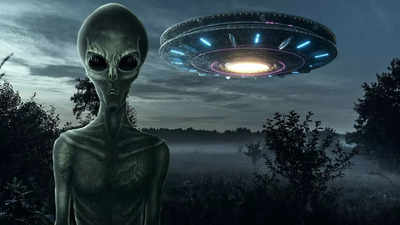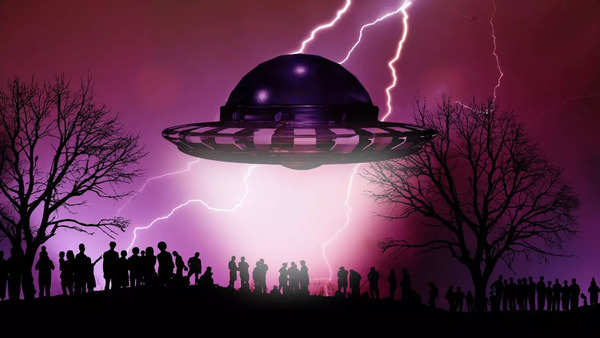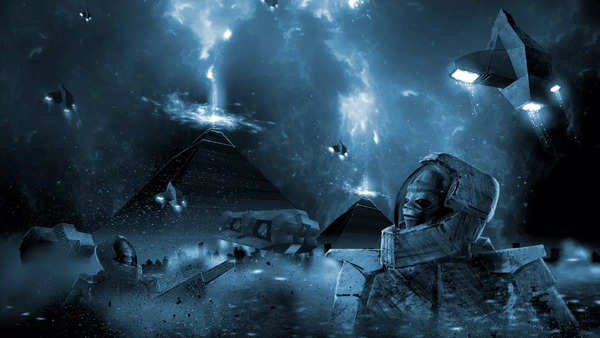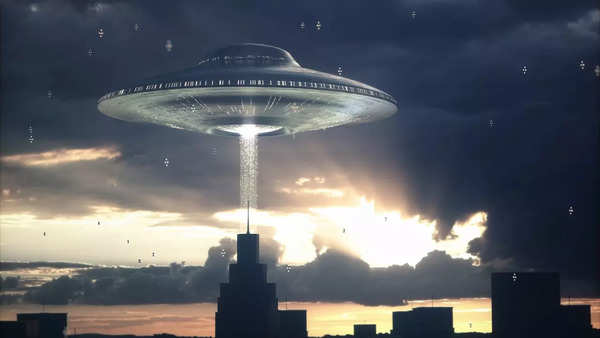
The word alien comes from the Latin “aliēnus” which means “not one’s own, foreign, alien, alien”. It comes from the Latin word alius, which means “another”. The concept of extraterrestrials has been around for a long time, and each school of philosophy has different views on them. The earliest speculations about extraterrestrial life can be found in discussions between the Epicurean philosophers in ancient Greece and their Roman disciples. In his book De Rerum Natura (On the Nature of Things), the Roman epicurean poet Lucretius writes: “Nothing in the universe is unique and solitary, and therefore there must be other lands in other regions inhabited by different tribes of men and breeds of animals. »

Then enter Nicholas of Kusa German philosopher, theologian and cardinal who advanced the idea of extraterrestrials in the 15th century, but with a twist. Nicholas declared in his works that instead of the Sun or even the Earth, God was the center of the universe (this was before Copernicus established the heliocentric model). But this was not so, he argues: “Instead of thinking that so many stars and parts of the sky are uninhabited, and that this earth alone of ours is inhabited – and that by beings, perhaps of an inferior type – we will suppose that in each region has inhabitants who differ in nature according to rank, and all owe their origin to God, who is the center and circumference of all star regions.’

The idea was well received, and soon his contemporaries also began to discuss the implications of such a possibility. While the concept of aliens has so far been viewed from a scientific perspective, medieval scientists fit the concept well enough with their religious beliefs. Today, aliens are a hot cultural topic and are being taken more seriously, with the Pentagon creating a special office, Congress holding hearings, and NASA joining the investigation. Despite the increasing attention and importance given to the confirmation of the existence of extraterrestrial life, we do not know anything significant about them. Let’s take a look at why, even in the absence of substantial evidence, the concept of extraterrestrials is still hotly debated.
The concept of UFOs

Until the 1940s, aliens were only an imaginary concept, the existence of which was always blurred in the ideas of religion, fantasy and superstition. This changed quite quickly with the advancement of technology and we saw the development of a new concept – Unidentified Flying Objects or UFOs. Kenneth Arnolda private pilot, claimed to have seen nine high-speed flying saucers shoot across the sky as he flew past Mount Rainier on June 24, 1947. That same year, the Roswell Daily Record reported the capture of a “flying saucer.” on a ranch in the Roswell region. However, it soon turned out that it was not an alien spaceship, but a high-altitude meteorological balloon with a radar reflection. This caused a massive backlash among people who were obsessed with the notion of extraterrestrial life, so much so that a new subculture known as “Ufology” was created.
Blue book project

The 1950s and 60s are full of stories about “sightings” of suspicious-looking flying objects that people immediately recognized as alien. However, they spread the belief among people that aliens are not only real, but also visit the Earth from time to time. This belief was further fueled by the fact that the government’s investigative project, known as Project Blue Book, was very hush-hush. Conspiracy theorists enjoyed this opportunity, each trying to make sense of the events in their own way.
Area 51 and alien abductions

Area 51, a secret US Air Force facility in Nevada, has become the focus of conspiracy theories, especially regarding alleged encounters with extraterrestrials. Along with these rumors came the concept of alien abduction, which changed the public’s perception from curiosity to fear. The aliens have evolved from distant, ethereal creatures to technologically advanced beings that can potentially observe and abduct humans, adding an unsettling layer to the mystery surrounding extraterrestrial life. This fear manifested itself in the early 1950s when Antonio Villas-Boas claimed he had been abducted by aliens while working nights on his family farm in Brazil. As reported by “Collector”, Antonio said he was grabbed by these creatures wearing gray overalls and helmets. The creatures then took him aboard their ship before removing their helmets. They obviously had small blue eyes and spoke through a series of animalistic grunts.
Another case of similar kidnapping claims was made by a couple of them Betty and Barney Hillwho believed they had been abducted by aliens to study the human body. But as people have gotten information through various networks, especially the Internet, the concept of aliens is seen in a new light, more scientific and logical than just feeding our fears. For example, the UFO received a new name. According to government regulations, UFOs are now known as Unidentified Anomalous Phenomena (UAP). a physicist Enrico Fermiintroduced a new concept known as Fermi’s Paradox – the idea that advanced extraterrestrial life is highly probable, but there is no conclusive evidence for it. The universe is so vast and vast, and it is entirely possible that extraterrestrial civilizations have evolved better than us to be imperceptible to the human mind.

SETI
When it comes to the various organizations dedicated to the search for life on other planets, SETI is the most famous. SETI, or the Search for Extraterrestrial Intelligence, is a branch of astronomy that uses a variety of techniques to search for signs of technological activity on other planets. However, they also failed to find signs of life beyond Earth.
A recent NASA briefing on UFOs confirmed that there has been no change in our understanding of aliens or their existence. This briefing comes as NASA embarks on its first UAP exploration project in 2022. As technology advances and our understanding of the universe deepens, this mystery continues to spark curiosity, fueling the search for answers. And how Carl Sagan – absence of evidence is not evidence of absence, so the search should continue until proven otherwise.










